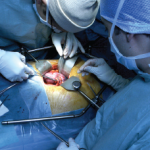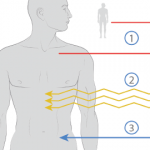Social media comments open “a dialogue,” Dr. Blanco adds. When a patient sees that there’s somebody else who needed a transplant, it makes it a little more real for them. When “it’s somebody [you] kind of know, … you can put a face [with] a transplant … and it makes you think, ‘Am I at risk for this?’ ‘How do I avoid this?’ or, ‘Oh, wow, they got a transplant. Maybe it’s not so scary.’ It can really open to the door to a lot of hearty conversations [with patients].”
Dr. Manzi says she uses the news to connect with patients where they are.
“I use it as an opportunity to say, ‘You see how serious this disease can be? It’s important that we follow you closely. It’s important that you take your medication. It’s important that we monitor, because kidney failure can happen. Look at Selena Gomez,’” she says. “It’s a reminder to [patients to] take control of their own wellbeing. And I’m a real big believer … in self-awareness, self-education and taking control.”
Dr. Blanco says that when a celebrity has the courage to publicly reveal the details of treatment, it is a chance for rheumatologists to discuss self-management techniques with their patients. The ACR, through The Lupus Initiative, recently released tools and resources to help patients with self-management.
Patients are “grasping for things that can help put everything into context, center you and really point you in a direction to take charge,” Dr. Blanco says. “And that’s my focus when I talk about self-management with my patients: How to find a rheumatologist who you really connect with, how to have those hard conversations with your rheumatologist, what you should be talking about.”
Dr. Blanco says she tells patients, it’s OK to say, “’I’m overwhelmed. I don’t know where to start. You just talked for the past five minutes about my disease and my treatments, and I didn’t understand a word of what you just said.’ That’s OK. I appreciate when somebody says that.”
Although self-management is exactly that, it’s incumbent on the rheumatologist to guide the patient into how to do it successfully, Dr. Blanco adds. Using celebrity news is a powerful way to promote discussions that will empower patients with the knowledge they need to manage their disease.
“You don’t want the patient to become lost in the diagnosis,” she says. “You don’t want them to become, ‘Oh, that lupus patient.’ You want them to become this person—mom, wife, mother, partner—who happens to have lupus.”


